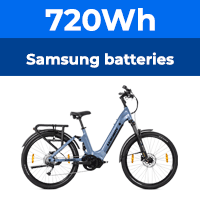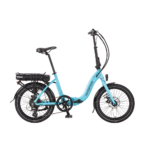I've just read up on it, but it's just reinventing an old wheel. We've had numerous onto wheel friction drive systems over the last 75 years and they've all failed to last in the market. The only meaningful difference here is the variable pressure system to avoid friction roller slippage.
This still avoids the fundamentals though, that a friction drive onto the tyre tread has many disadvantages, such as:
Tyre wear even when there is minimal slippage.
Only fairly smooth tread tyres suitable.
Less easy to apply the legal control of power phase down and maximum assist speed.
The authors seem to be under the impression that existing pedelecs mostly use hub motors, often kit based, but in fact for over decade there's been a big shift in preference for ready made pedelecs with crank based motors at the bottom bracket. There's no doubt that this is the way the market is going, away from kits to convert ordinary bicycles into the supply of complete pedelec designs, whether with wheel hub motors or drive through the chain systems.
It's a repeat of what has happened before. For example in the late 1940s and early '50s there was a boom in little add on petrol cycle motors, but it didn't last, the only survivor for some 25 further years to 1983 being the one that was designed and sold as a complete i.c. motor equipped powered bicycle. Ironically it too had a friction drive, ultimately making it unacceptable. The French manufacturer has tried to introduce a modernised version using an electric motor instead, but that has failed in the market too.
There's still YouTube reviews of the Alizeti bicycle motor online, but it seems to have failed in the market like all the other friction systems. The only Alizeti company here online in Britain is a painting and decorating company.
.







